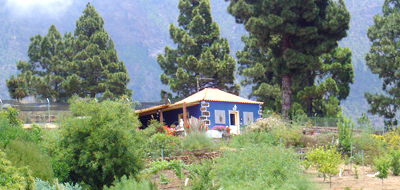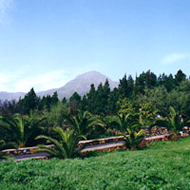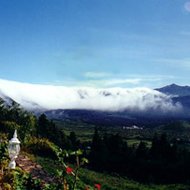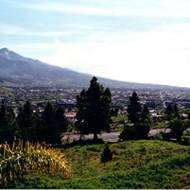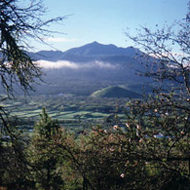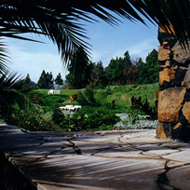La Palma
Known both as "La
Isla Bonita" (the beautiful Island) and "La Isla Verde", (the
green Island), La Palma is indeed the greenest of the seven Canary
Islands. The English author, Henry Myhill, writes in his book
The Canary Islands (Faber & Faber, London, 1968): "La
Palma has neither the beaches of Fuerteventura, the dry south of
Gran Canaria, the snow-capped peak of Tenerife, the giant heathers
of Gomera, the strangness of Lanzarote, nor the friendly isolation
of Hierro. But I am arguing against myself. When pressed I feel
bound to admit that La Palma is the most beautiful island of all."
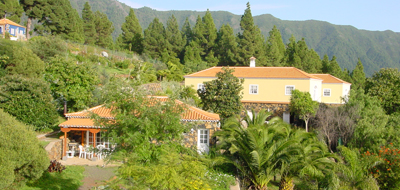
Also referred to as the "land of eternal Spring",
the sun shines somewhere on La Palma almost every day of the year. Temperatures
rarely drop below 18 degrees Centigrade in winter and above 25 in the summer.
With the world's highest ratio of mountain height to overall land area,
countless "micro-climates" are found on the Island, with sunny weather at the
beaches on the west side practically every day, even if it should be cloudy
elsewhere. Vegetation ranges from succulent plants at sea level, with banana,
citrus, tropical fruits and food crops a bit further up the slopes, as well as
vineyards and tobacco at the higher altitudes. Situated at an altitude of 800
metres above sea level, Quinta Valencia contains the Island's premiere
plantation of the historically famous Malvasía grape, with the unique and famous
Canary pine trees forming a dramatic background
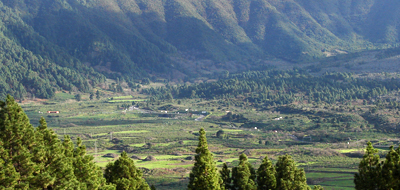
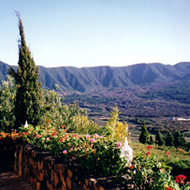 |
|
La Palma is an
European island off the African coast with South American charm. A
sub-tropical island with a colorful mixture of people. A Spanish
island with a Flemish past, with Portuguese and Latin influence.
Close ties with Cuba and Venezuela have existed for the last few
centuries, and this is reflected in the language, life-style, the
traditional music, folklore and culture.
With agriculture
as the main source of income for the residents, gentle, or
sustainable tourism development is a secondary objective of the
authorities, with La Palma destined to avoid the overdevelopment
rife on the more important Canary Islands. And UNESCO has declared
the entire land as a Biosphere Reserve.
As varied as
nature is on this mini-continent, the choice of leisure activities
is varied. Hiking, cycling, diving, horse riding, paragliding,
dolphin (and occasionally whale)
viewing are
easily sourced. Construction on two major golf courses will begin
in 2007. And La Palma is considered one the top two astronomical
sites in the world, with some 13 observatories situated on the
highest point of the Island.
An
excellent variety of restaurants, both international as well as
local are found on the Island.
In summary, then,
La Palma affords a variety of leisure pursuits and opportunities
for an enjoyable and quiet holiday experience without the hustle,
bustle, and over-crowding by mass tourism found at so many other
places on the Spanish mainland in the Canaries as well.
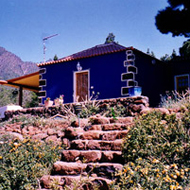 |
|
The property
manager
resides here, and is available to greet arriving guests, to
explain things, and to be of any required assistance. |
|
|
